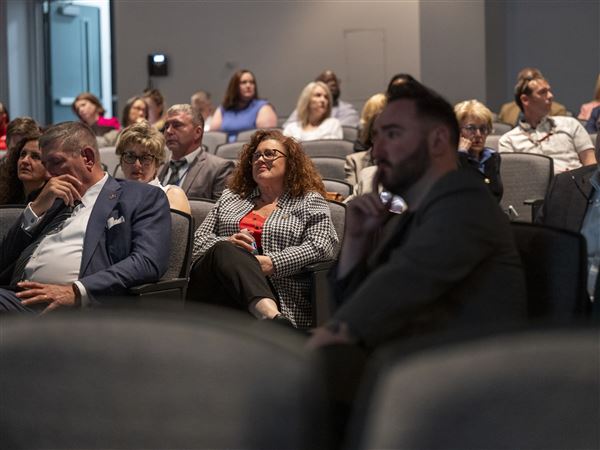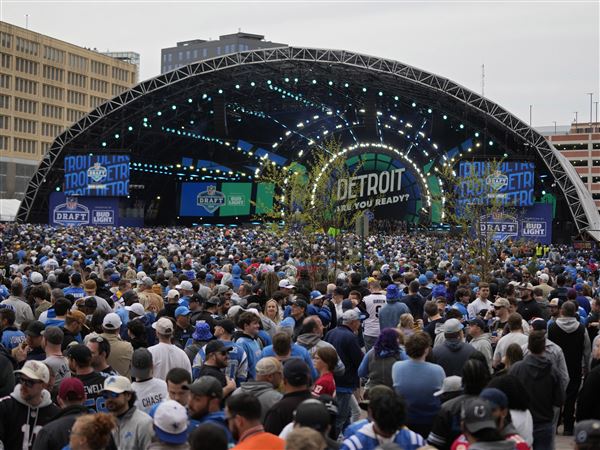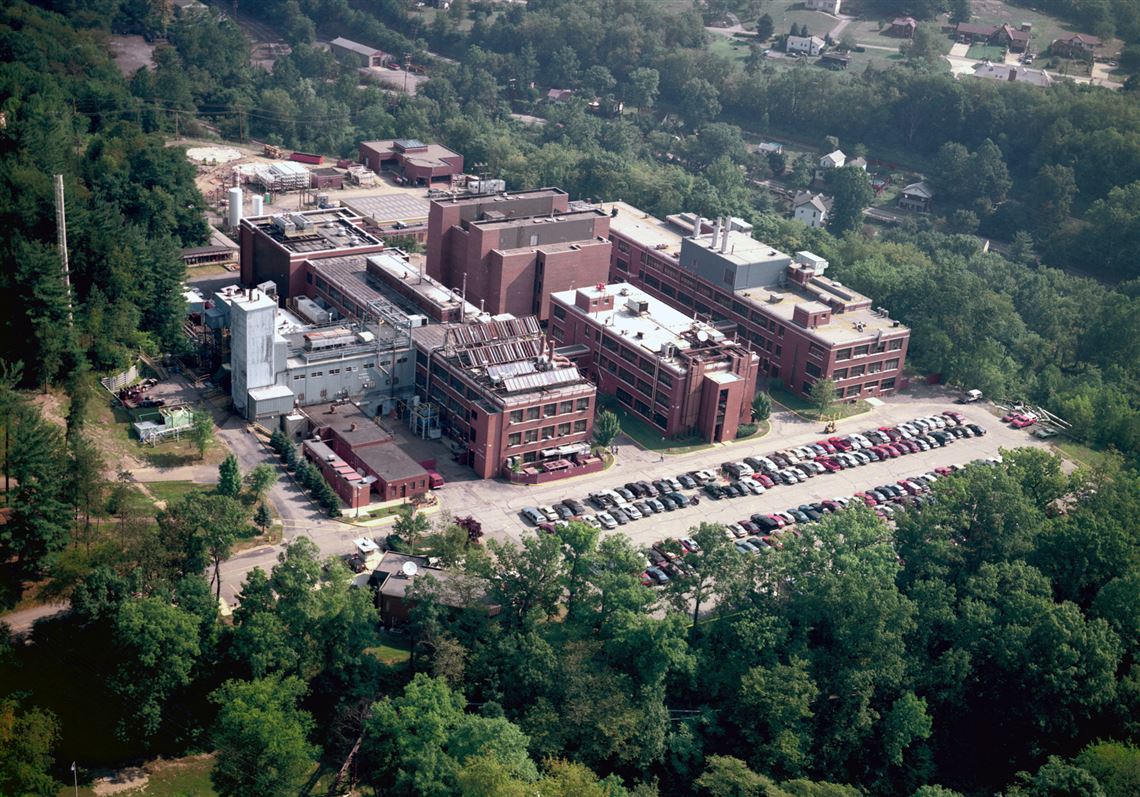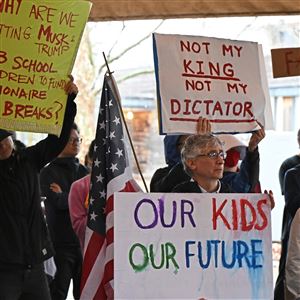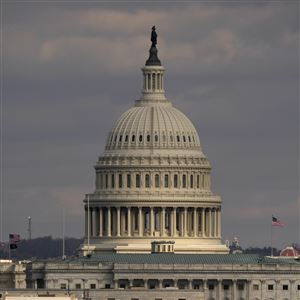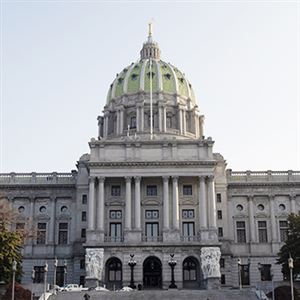The National Energy Technology Laboratory in South Park, a century-old institution, is at once a pillar of federal fossil fuel research and a shape shifter, pivoting its work to accommodate new problems, new political priorities, and all manners of sudden disruption.
It began as a site to blow things up, after all.
But even long-timers at the lab, with facilities here, in Morgantown, W. Va., and Albany, Ore., report a new kind of whiplash over the last six weeks.
Even before about 55 probationary employees were summarily fired via a midnight e-mail on Valentines Day only to have the terminations deemed illegal and ordered to be reversed by a federal judge on Thursday, the lab’s 1,400 or so researchers and support staff were facing an unknown future.
There was a media blackout, a moratorium on submitting research for publication, and the famous “Fork in the road” e-mail offering paid, deferred resignations — Elon Musk, of President Donald Trump’s Department of Government Efficiency, sent an e-mail with the same subject line to all employees at Twitter when he took over and started slashing jobs there — that looked so suspicious some employees reported it as a potential phishing scam.
“It came at 1 in the morning, too. That didn’t help,” said an employee who was among those fired.
A few dozen took the offer.
There was also confusion about the administration’s directives to stop disbursing money for work related to the Inflation Reduction Act of 2022 or the Infrastructure Investment & Jobs Act of 2021 — two landmark clean-energy bills of the Biden era that informed much of what the government was doing over the past few years and how it was doing it. NETL went from managing $1 billion in research and development funding to managing $7 billion, its former director Brian Anderson said during an event at the South Park lab in December.
At NETL, that meant a strong focus and much more funding for things like carbon storage projects, hydrogen development, and figuring out how to use fossil fuels in ways that don’t increase pollution and climate change — like turning them into chemicals or other precious materials.
“One of the primarily reasons the U.S. has national labs is so we have the necessary expertise in-house in case of emergencies,” said Alexander Dudchenko who moved from California to Pittsburgh last year to take a job at NETL and was fired on Feb. 14. The effect of cutting federal energy research will be felt years from now, he said, “when we don’t have the new technologies and capabilities to keep the U.S. ahead.”
Mr. Dudchenko was among the two dozen people at the Pittsburgh campus to lose his job. Overall, the union that represents NETL employees estimated that 56 probationary employees were terminated across the lab’s properties.
Lilas Soukup, president of the American Federation of Government Employees Local 1916 who retired after 40 years with the national lab in South Park, said she’s been through many changes in Washington, recognizing that some come with hiring freezes and a shift in priorities. One president may love the idea of funding clean coal demonstration projects, while another may consider that a waste given coal’s seemingly irreversible retreat as an electricity source.
But what’s happening now, she said, “I could never imagine.”
‘Changes by the hour’
Ms. Soukup has been fielding calls from worried employees trying to read the tea leaves of the budget that awaits NETL in the coming months, while the agency crafts a mandated reorganization plan, due on Thursday. All government agencies were instructed to come up with such plans, which would include a reduction in force.
Federal funding remained in question into Friday as Congressional Republicans attempted to pass a six-month spending bill to fund the government and avert a shutdown. The Senate passed the measure, 54-46, and Trump signed it into law Saturday.
However, the budget for the next six months does not address NETL funding levels specifically, and leaves a lot of energy project funding up to the discretion of the administration.
Meanwhile, a judge in the U.S. District Court for the Northern District of California ruled that it was unlawful for six government agencies, including the Department of Energy which controls NETL, to conduct mass firings of probationary employees — those that were in their positions for period that ranged between one and three years. The judge ordered the agencies to offer them their jobs back.
On Thursday afternoon, Ms. Soukup said attorneys for the various public sector unions that brought the case before the court were meeting to figure out next steps.
“Changes by the hour,” she said.
Some of the fired probationary employees who spoke to the Post-Gazette on condition of anonymity said they didn’t know if they would go back to NETL with more layoffs expected in the coming weeks and months.
“I would like to go back depending on how everything shakes out,” one of them said on Thursday. “I am skeptical of course... but I really enjoyed working at NETL. I’d still be concerned that I’d be let go in the future.”
Some departments have already begun the layoff process — the U.S. Agency for International Development has fired most of its employees. The Department of Education cut its workforce in half. Last month, Trump told reporters that his administrator of the U.S. Environmental Protection Agency, Lee Zeldin, planned to cut staff by 65%, a number which the White House later said referred to spending, not staffing, cuts.
“If NETL gets a reduction in force of 60%, would the lab even exist?” Mr. Dudchenko wondered.
‘It will take generations to fix’
On Wednesday, Mr. Dudchenko said that he accepted a position as a staff scientist at the Stanford SLAC National Accelerator Laboratory, his previous employer.
One of his primary functions was developing software tools to inform the best way to clean water and extract rare earth minerals from it. Rare earth materials are used in many electronic and computing devices and the U.S. is trying to shore up a domestic supply of them.
Like all of the former employees and other energy research professionals interviewed for this story, Mr. Dudchenko was struck by the arbitrariness of the firings, the pauses, and the guidance coming from Washington.
“I work in critical minerals and we’re in a critical mineral emergency,” he said, referring to a Trump executive order that specifically listed critical minerals as “energy resources” under his energy emergency declaration.
If the goal was efficiency and refocusing the government’s resources on administration priorities, disrupting this work makes little sense to Mr. Dudchenko.
“It will take generations to fix what is being done right now,” said a senior official at the Department of Energy who was not authorized to speak to the media.
“They’re pausing critical energy [research]. There is nothing efficient about what’s happening. It’s random and senseless.”
What’s at stake at NETL isn’t unique — every government entity is dealing with their own interruptions and firings, some in more tangible ways and with immediate, obvious results.
When Veterans Affairs loses nurses, most people can accurately surmise what that means for the facilities where they worked.
The role of national labs — the U.S. has 17 of them in total with all but NETL operated by contractors — is less clear to most Americans.
“They’re the envy of the world. And we have one in Pittsburgh,” marveled Costa Samaras, who spent the past three years in the White House as a science advisor in the Office of Science and Technology Policy and now teaches at Carnegie Mellon University.
“Regions of the country that have national labs like ours have these opportunities for companies to spin out, get patents,” he said. “The innovations that happen at NETL can change the world.”
Pulling research funding and firing federal researchers, even temporarily, is like hiring a contractor to redo your roof and firing him midway through, Mr. Samaras analogized.
There might be a lawsuit; you might have to hire another contractor.
“But in the meantime, it’s raining in your house.” he said. “And we’re in the ‘raining in the house’ phase.”
A bastion of research
NETL grew from seeds planted at the turn of the 20th Century when coal mining was booming and coal mining deaths were too. In 1910, Congress created the Bureau of Mines and the new agency worked inside Allegheny Arsenal in what is now Lawrenceville, to find explosives that could be used in the mine without endangering miners. But to test them, the agency leased a parcel of land in South Park and built an experimental underground mine. In 1911, it hosted 1,500 spectators for a planned explosion that was covered in the New York Times, according to an extensive history of NETL published in 2010.
The explosives expertise came in handy. NETL’s history says its researchers were deployed as crime scene experts after political bombings. They designed the trigger for the atomic bomb and did pioneering research into methane embedded in coal seams, a major explosion risk for coal miners.
Researchers also consulted on how to properly ventilate the Liberty Tunnel during its construction in the early 1920s.
Mining safety research became part of the National Institutes of Occupational Safety and Health, a division of the Centers for Disease Control. A few hundred CDC employees work at the NETL campus today.
The federal government has often turned to NETL to come up with technological solutions to a particular economic or environmental problem. When, in the 1970s, emissions of sulfur dioxide and nitrogen oxides from coal burning mixed with water in the atmosphere created acid rain, leaving a mark on rusted cars and corroded brick buildings across the U.S., NETL researchers pioneered affordable emission controls, allowing the Environmental Protection Agency to set limits that coal plants could follow. Within a few decades, the near elimination of acid rain became an NETL success story.
In the late 1970s, NETL also began to explore the geology of shales and various technologies that could make it worthwhile to extract oil and gas from them, as shallower and cheaper sources of fuel were depleting. Reflecting on the shale revolution over the past two decades which brought U.S. production of oil and gas to historic highs and established it as the top exporter of both products, the oil and gas industry has credited NETL’s work in reservoir characterization, horizontal drilling, and hydraulic fracturing.
“When you think of an entire lifecycle of innovation, you can back up a few years to horizontal drilling and stimulation that has resulted in literally trillions of dollars to the American economy,” Mr. Anderson, NETL’s former director, said in December at NETL’s 25-year anniversary since becoming an official national lab.
“The opportunity to just go out on a limb and take some high risk leap,” he said. “Twenty years from now, we’ll be talking about how this changed some fundamental part of our economy.”
The lab is a kind of bridge between early research being done at universities and adoption by industry. Its job is to ensure that a technology not only works but could be adopted commercially and to facilitate that process.
“We patent our technology first, but the eventual goal is to transfer our technology to industry partners,” said a recently fired research scientist who asked that his name not be used as he is looking for a new job.
When the termination notice came, he was several years into a project to scale up a manufacturing process to make a material used in clean energy applications from a widely available domestic resource.
U.S. companies were interested in the work because it could give them a new market for their product, he said. The federal government was eager to find a source of this material that didn’t come from China and that could be made affordably and without the kind of emissions that come from other manufacturing processes.
For several years the researcher worked as a contractor at NETL through a major government contractor that runs several national labs and supplies workers to NETL, which is run by federal employees. Today, around 1,400 people work at NETL, with half of them in Pittsburgh. Of those, a few hundred are contractors. The Department of Energy did not return several requests to clarify its employment figures at NETL.
Last year, the now-fired researcher made the move into the federal government so he can lead the team to commercialize this manufacturing technology.
Staffing up, staffing down
NETL has two sides of the house. One does research in-house and the other oversees federal funds for energy research and demonstration projects outside the lab, with NETL scientists, economists and tech experts pitching in to evaluate projects and shepherd them along.
“[Suppose] somebody has received a contract to upgrade the energy efficiency of a manufacturing plant. Or to build a new factory that’s going to make batteries,” Mr. Samaras said. “There needs to be a contract specialist that’s stewarding the public’s money to ensure the performance of the contract is on time and on budget.”
“This is ensuring that the federal government gets what it pays for.”
That role is magnified during years when the government decides to pump a lot of money into a piece of legislation, as was the case in 2009 when Congress passed the American Recovery and Reinvestment Act to stimulate the economy after the 2008 recession.
The infrastructure and energy bills of the Biden administration brought billions of dollars in energy project funding under NETL’s purview. NETL staffed up to handle the new work. Ms. Soukup said the agency added up to 150 people to oversee the distribution of IRA and IIJA funding.
It also hired a chief diversity officer and created a DEIA — diversity equity inclusion and accessibility — program at the lab, according to NETL documents. And it increased its outreach to minority researchers and students, reporting a 10% increase in racial diversity among these groups in 2023.
The Biden administration wove the consideration of diversity, equity, environmental justice and community engagement into the federal funding that flowed from its energy bills. And as much as those were priorities for both the government and many private entities over the past several years, the Trump backlash against them was swift and aggressive.
The president issued a first day executive order calling for all work that involves DEI to cease, and agencies across the federal government have seen their documents and programs combed through for words related to diversity and equity.
One fired contract specialist said the agency was preparing to revise many project narratives to eliminate related terms and cancel requirements for projects to pursue community benefits.
At the December celebration, another former NETL director Carl Bauer offered his advice about building trust with the Department of Energy’s headquarters. That relationship “can either amplify success or get in the way,” he said. “In the next six months, that will be one of your hurdles that will have to be dealt with in as expeditious a manner as possible.”
“It’ll be a good challenge for us, to be sure,” NETL’s current director Marianne Walck replied.
First Published: March 14, 2025, 12:18 p.m.
Updated: March 17, 2025, 12:53 p.m.

